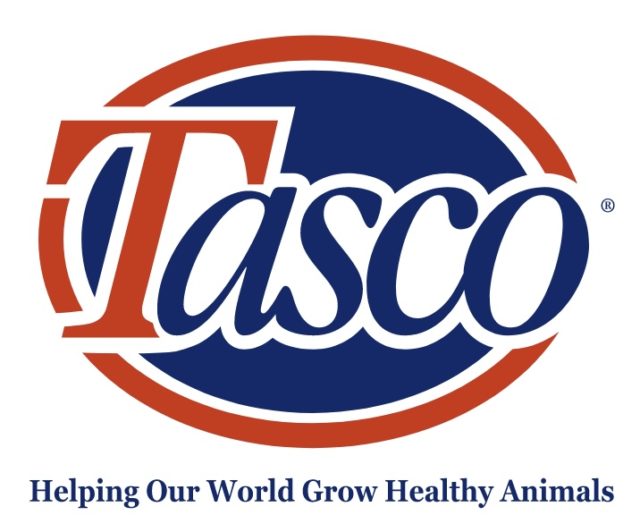Soil carbon markets are one of the latest incentives to move the agricultural community toward more sustainable, eco-conscious practices. The idea is simple: Farmers can store, or sequester, carbon in their soil, then sell that stored carbon in an open market where other carbon-conscious businesses can purchase it as a “carbon offset.” While some great minds have been studying soil (and in particular soil carbon) for decades now, the science of soil carbon sequestration is still in its infancy, and there’s a lot yet to be figured out. There are some established facts and ideas about soil carbon that are important to know if the agricultural community is going to begin seriously using soil carbon in a way to offset carbon footprints and try to combat climate change.
The most important point is to try and develop a basic understanding of carbon and the carbon cycle. Carbon in the environment can be placed into one of two buckets. Bucket one, called inorganic carbon, consists of mainly mineral substances such as calcium carbonate, more commonly known as lime. Lime, or limestone, is commonly used in agriculture to increase the pH of soil. Managing soil pH is one of the most important agricultural practices available to help manage yield, and it’s a widely adopted practice. As an interesting aside, the chemical process that increases soil pH through liming actually causes the carbon in the lime to be released to the atmosphere as carbon dioxide, which is exactly the opposite of the intent of soil carbon sequestration. That little interesting tidbit notwithstanding, inorganic forms of carbon are not of interest to carbon markets.
The second bucket in which we can place carbon is called organic carbon, and this is the carbon at the heart of carbon markets. As the name implies, organic carbon is carbon that cycles through the environment via the processes of living things. In chemical terms, organic carbon is classified as carbon atoms which are bonded to one another and could also be bonded to hydrogen or oxygen atoms. The specific chemical properties of the myriad organic carbon molecules that exist are not of particular importance. What is of importance in this discussion is to know that organic carbon in the soil can be further classified into three subcategories, called carbon pools, based upon how quickly the carbon can change form. It may be easiest to understand these pools if we look at them under the light of personal finance.
The pools of carbon
First, we have what’s known as labile carbon. The cycling of carbon in the labile pool is on the order of weeks to years, and it can be considered the cash of organic carbon; it cycles easily and quickly. This quick and easy cycling is referred to as shallow carbon cycling, and the carbon in this pool is accumulated by the plant as cell walls, oils and other tangible plant material. Because the plant is living in an ever-changing ecosystem, this carbon is consumed by soil microbes, deer and other living organisms that change the form of carbon through their metabolic processes. The decomposition of this plant material can release carbon dioxide, which is then taken up again by the plant, and the cycle continues. After the crop is harvested, however, there are no plants to immediately take up the carbon dioxide created through decomposition, which leads to carbon dioxide being released to the atmosphere. The importance of having plants ready to take up the carbon dioxide is why cover crops are often a focus of carbon sequestration.
Next, we have the second-fastest carbon pool to cycle, which is known as the humus pool. Cycling in the humus pool is on the order of years to decades, making it akin to money tied up in retirement funds or investments. It can be accessed, but not as easily as cash. Organic molecules in this pool are more complex than those in the labile pool, causing them to be decomposed more slowly. Here we can find plant compounds such as lignin, which is a durable molecule that does not lend itself easily to microbial decomposition. Aside from the complexity of the molecules in the humus pool, the distance between these carbon molecules and the atmosphere also poses a physical barrier to shallow cycling. If, for example, the carbon accumulated in a taproot at a depth of 3 feet in the soil is decomposed, the resulting carbon dioxide will have a more difficult time escaping those 3 feet of soil than it would if it were mere inches from the surface. Therefore, carbon sequestration discussions will often focus on the root structure of the crop as well as agricultural practices at the surface. Deep, more extensive root systems will do a better job of sequestering carbon in the lower soil profile than shallow or simple root systems.
Finally, we have the recalcitrant pool of carbon. This carbon is the most slowly cycled, with a cycle of decades to centuries, and can be likened to money tied up in real estate or other hard-to-convert investments. In the recalcitrant pool, we find common carbon-based energy sources such as coal and oil. While these carbon molecules are still organic molecules, they cycle more slowly because they cannot be readily eaten by living things, so there’s no real natural way to break the carbon bonds and convert the carbon to new forms. To point out the obvious, there is one common “natural” way to convert these, which is to burn them. Finding a way to use agricultural practices to put carbon back into the recalcitrant pool is the Holy Grail of carbon sequestration.
Carbon end game
The end game of carbon sequestration is to use relatively easily implemented agricultural practices to shift some of the carbon from the labile pool into the humus pool and to incentivize it with money. Simply put, there are two mechanisms that can be applied to help with carbon sequestration. The first is to use biological processes to tie up carbon dioxide in plant material, and the second is to create a physical barrier between carbon dioxide and the soil surface – to literally trap the carbon dioxide in the soil.
As mentioned earlier, cover crops are a common focus because the practice is already well established and the knowledge and equipment are readily available. Cover crops are a great way to use biological processes to tie up carbon dioxide. Helping with carbon sequestration is only one of the many benefits that come with cover crops, though. They help to stabilize soil through the nonproductive months, and they also help to hold nutrients in the soil so those nutrients will be available to the coming crop. As one USDA research scientist very eloquently put it: “Bare soil bad,” and cover crops are good.
No-till and reduced tillage practices are also a common focus of carbon sequestration and carbon markets because this is also a well-established practice with readily available equipment. These practices use the second method of carbon sequestration: trapping carbon in the soil via physical means. Whenever soil is tilled, the soil surface area is greatly increased, and the amount of soil in contact with the atmosphere is thereby greatly increased. That is how tillage results in a greater release of carbon dioxide from the soil than non-tillage practices.
Measuring carbon
Though the goal is to simply trap carbon, measuring the efficacy of trapping carbon (and therefore measuring our progress toward the goal) is much more difficult. Frankly, science has not caught up to the expectations of the market. As previously discussed, carbon sequestration aims to change the pool the carbon exists in. There are some well-researched scientific methods for measuring the carbon in the soil, but they are slow, expensive and not standardized. Moreover, they are not good at determining which pool the carbon is in. This means that as of the writing of this article, the impact of soil carbon markets in the battle over climate change is largely theoretical. Carbon markets are not currently regulated at the state or federal level, and private industry is in control. That leads to competing algorithms that try to predict the impact of changes to agricultural practices with no real reference point grounded in science.
Some in the government are trying to change that. In Wisconsin, the governor’s Task Force on Climate Change has suggested that Wisconsin create a pilot program of Carbon Farmers, in which the benefit of these agricultural practices could be measured, and soil carbon markets could be better legitimized and controlled. In conversation with state legislators, however, there seems to be little appetite for discussion about anything related to climate change – even if it could benefit farmers.
While the ultimate impact of soil carbon markets has yet to be determined, they have done one thing well: They’ve gotten the agricultural community to begin thinking seriously about climate change solutions – not as politically divisive arguments but as potential win-wins. As the popularity of carbon markets grow, it’s important to insist to lawmakers that standardization take precedence. If these markets can be proven to be beneficial in trapping carbon, they could be excellent tools in our collective tool chest that will have the dual benefit of helping the global effort to resist climate change as well as helping the local farmer supplement their income.










